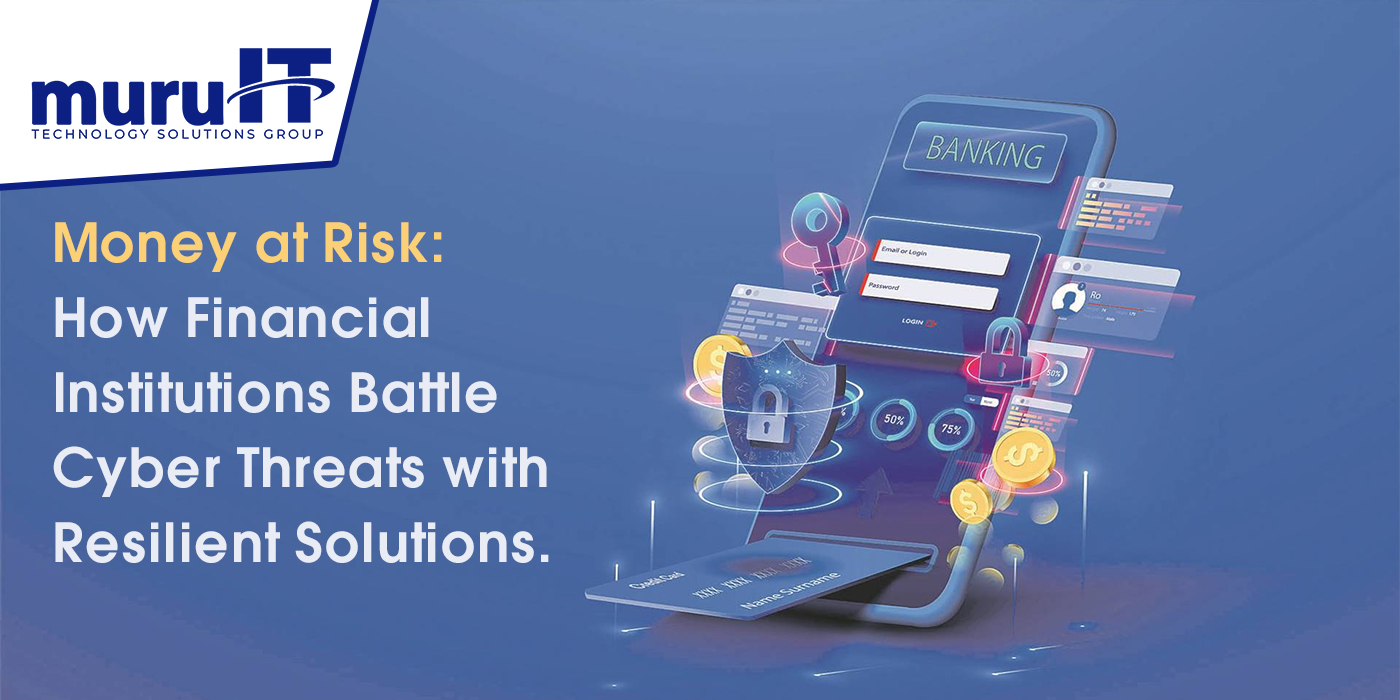The financial sector is a prime target for cybercriminals, and the threat of cyber attacks is only increasing. As financial institutions continue to rely on technology to streamline operations and enhance customer experiences, they must also learn to “survive on a diet of poisoned fruit,” as the risk of cyber threats looms large. From ransomware attacks to phishing scams, the financial sector faces a range of cybersecurity threats that can have far-reaching consequences. In this article, we’ll explore real-life scenarios of cyber threats faced by financial institutions worldwide and the resilient solutions they’ve implemented to mitigate these risks.
1. Target’s Data Breach (2013)
The cyberattack on Target was a wake-up call for the retail and financial sectors. Hackers gained access to Target’s network through a third-party HVAC contractor, exploiting vulnerabilities in their systems. Target responded by promptly disclosing the breach, offering free credit monitoring to affected customers, and investing over $100 million in enhanced cybersecurity measures. These measures included chip-enabled cards, advanced encryption methods, and tighter network security protocols, emphasizing the importance of securing supply chain connections.
Mitigation Strategies
Target responded to the breach by implementing several key strategies:
- Enhanced Encryption: Adopted chip-enabled cards and advanced encryption methods to secure payment transactions.
- Supply Chain Security: Strengthened supply chain connections and conducted rigorous security assessments of third-party vendors.
- Investment in Cybersecurity: Invested over $100 million in upgrading cybersecurity infrastructure and protocols, including network segmentation and access controls.
2. SWIFT Banking System Heists (2016)
The SWIFT banking system heists involved cybercriminals exploiting weaknesses in banks’ networks to initiate fraudulent transactions. Financial institutions, including Bangladesh Bank, faced significant financial losses. In response, banks worldwide implemented multi-factor authentication, enhanced transaction monitoring systems, and conducted thorough security audits. SWIFT itself introduced mandatory security controls and initiated a Customer Security Program (CSP) to bolster security among its member banks.
Mitigation Strategies
Following the SWIFT heists, financial institutions implemented the following measures:
- Multi-Factor Authentication: Introduced stricter authentication measures, including multi-factor authentication for transactions.
- Enhanced Monitoring: Strengthened transaction monitoring systems to detect and prevent fraudulent activities promptly.
- Security Audits: Conducted thorough security audits and assessments to identify and patch vulnerabilities.
3. Equifax Data Breach (2017)
The Equifax breach compromised sensitive personal data, highlighting the vulnerability of credit reporting agencies. Equifax responded by launching an extensive investigation, enhancing its security infrastructure, and offering free credit monitoring and identity theft protection services to affected individuals. The incident emphasized the criticality of regular security audits, patch management practices, and proactive security measures within such organizations.
Mitigation Strategies
Equifax responded to the breach by implementing the following mitigation strategies:
- Investigation and Response: Launched a comprehensive investigation into the breach and enhanced incident response capabilities.
- Security Infrastructure Upgrades: Improved security infrastructure, emphasizing regular security audits and patch management practices.
- Customer Protection Services: Offered affected individuals free credit monitoring and identity theft protection services.
4. NotPetya Ransomware Attack (2017)
The NotPetya ransomware attack disrupted global operations, impacting companies like Maersk in the finance and logistics sectors. Maersk faced substantial financial losses due to this attack. Financial institutions learned from this incident by reinforcing secure backup practices, implementing robust incident response plans, and emphasizing network segmentation to contain potential breaches.
Mitigation Strategies
Equifax responded to the breach by implementing the following mitigation strategies:
- Investigation and Response: Launched a comprehensive investigation into the breach and enhanced incident response capabilities.
- Security Infrastructure Upgrades: Improved security infrastructure, emphasizing regular security audits and patch management practices.
- Customer Protection Services: Offered affected individuals free credit monitoring and identity theft protection services.
5. SolarWinds Supply Chain Attack (2020)
The SolarWinds supply chain attack exploited software updates distributed by SolarWinds, impacting various organizations, including financial entities. In response, financial institutions reassessed their third-party vendor risks, conducted thorough security assessments, and invested in advanced threat detection and response capabilities. The incident underscored the need for enhanced supply chain security measures and rigorous vendor scrutiny.
Mitigation Strategies
Following the SolarWinds attack, financial institutions implemented these measures:
- Vendor Risk Assessment: Reassessed third-party vendor risks and conducted rigorous security assessments of vendors.
- Advanced Threat Detection: Invested in advanced threat detection and response capabilities to detect sophisticated attacks.
- Supply Chain Security Enhancements: Strengthened supply chain security measures and emphasized vendor scrutiny.
Each of these incidents underscored the vulnerabilities within the finance sector, prompting a re-evaluation of cybersecurity strategies. These examples have driven financial institutions to adopt stringent measures to fortify their defenses against cyber threats, aiming to safeguard financial data and transactions from sophisticated attacks.
The mitigation strategies undertaken reflect a proactive approach by financial institutions to fortify their defenses against cyber threats. By focusing on multifaceted security measures, continuous monitoring, and strategic investments in cybersecurity infrastructure, these institutions aim to mitigate risks and safeguard financial data and transactions in an ever-evolving threat landscape.




